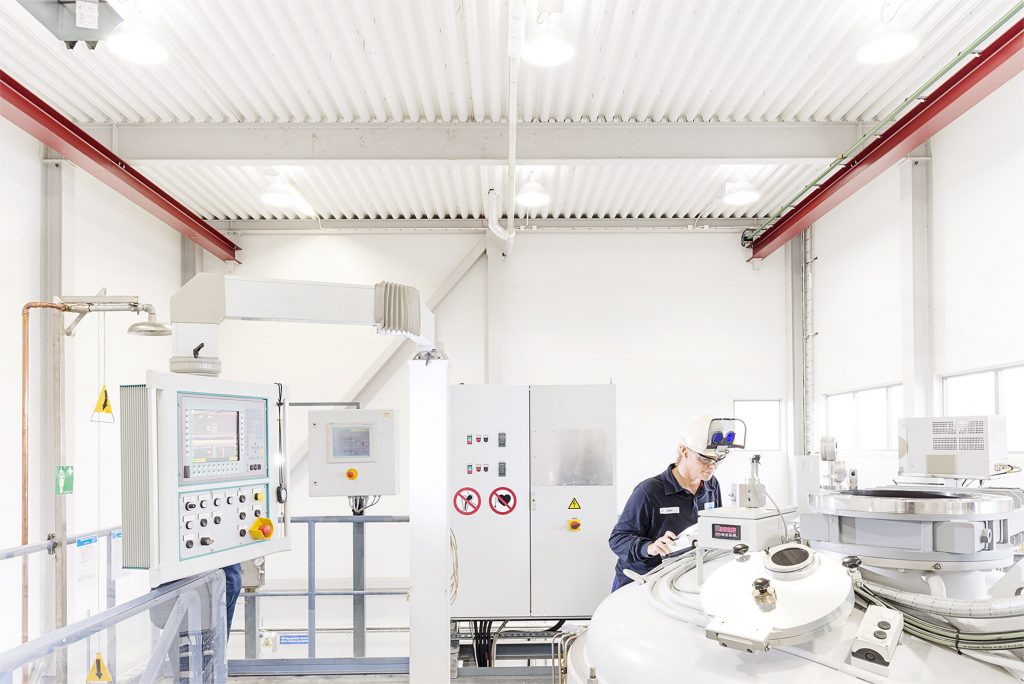Swedish multinational engineering firm Sandvik has altered its additive manufacturing strategy to focus mainly on metal powders amid a change in strategic direction.
The company, which offers manufacturing, mining and infrastructure services across 150 countries, also outlined plans to exit its minority stake in Italian 3D printing service provider BEAMIT. Additionally, Sandvik has divested DWFritz Automation, an engineer-to-order business it acquired in 2021, to US-based private equity firm Balmoral Funds.
This follows the firm’s Capital Markets Day 2023 announcement that it intends to increase focus on software-enabling hardware in its Manufacturing Solutions (SMF) business.
At the event, Sandvik President and CEO Stefan Widing told investors, analysts and financial media that the company has been on a “transformation journey in recent years.” He expressed that Sandvik is now looking forward to seeing how “this transformation has strengthened the company, both in terms of growth potential as well as the demonstrated higher resilience.”
These changes will result in charges of approximately SEK 390 million being recorded in Q3 2024, reported as items affecting comparability. Around SEK 250 million is from the sale of DWFritz, and SEK 140 million relates to a write-down of the stake in BEAMIT.

Sandvik’s shift in strategic direction
Sandvik decided to exit its approximately 30% stake in BEAMIT to align with its revised 3D printing focus on metal powders. As such, its Additive Manufacturing division is moving from SMF to the Machining Solutions (SMS) business. Here, it will merge with the Wolfram powder division to create a new multi-brand Powder Solutions division.
This move will build on the company’s material R&D efforts and metal powder portfolio. Notably, its Osprey metal powders include 3D printable materials ranging from copper and aluminum to Ni-based superalloys.
Through the strategic realignment, Sandvik will continue to grow its metrology technology. In particular, DWFritz’s ZeroTouch business offering is not part of the divestment and will remain a part of Sandvik.
ZeroTouch is a non-contact, high-speed inspection platform that enables near-line and in-line metrology for parts such as rotors, stators, and brake disks. Since 2021, Sandvik has developed and commercialized this offering, which can capture and analyze millions of data points in under 60 seconds.
The strategic changes also see SMF increase its focus on software with enabling hardware. Last year, the firm announced a revision to its 2025 SMF target revenue from 6 BSEK, with 60% coming from software, to 4 BSEK. Additionally, the SMF margin target was revised upward from 20% to 22% in 2025. The overall Sandvik Group target of achieving software and digital revenues of 6.5 BSEK in 2025 remained unchanged.

Take 15 seconds to tell us the impact of this news using the block below. Make sure you click submit!
3D printing industry experiences changing business strategies
Sandvik is one of the latest additive manufacturing-related companies to restructure its strategic focus.
Last year, global print and digital document corporation Xerox exited the 3D printing industry by selling its additive manufacturing business, Elem Additive Solutions, to ADDiTEC. This move came as the company sought to refocus its strategic priorities and investments on its core print, IT and digital service offerings.
Similarly, global chemical production company BASF also recently ended its association with additive manufacturing after the carve-out of BASF Forward AM into a new company. Forward AM’s leadership group, headed by CEO Martin Back, acquired the business which combines BASF’s 3D printing materials and solutions with its Sculpteo service bureau business.
Elsewhere, French 3D printer manufacturer and service provider Prodways Group (PWG) discontinued the sales of its small wax and resin 3D printers for the jewelry market. Announced in January 2024, the company has reallocated these resources to the development of high-volume, industrial 3D printers which possess higher added value. This strategic decision followed the poor FY’23 performance of Prodways’ jewelry 3D printers, sold under its Solidscape brand.
More recently, Precious metal specialists Cooksongold established Cookson Industrial. This new division seeks to apply precision metal additive manufacturing technologies to industrial sectors. It will reportedly expand the company’s expertise beyond jewelry into fields like aerospace and healthcare, with a focus on the use of precious metals in applications where traditional materials fall short.
Nominations are now open for the 2024 3D Printing Industry Awards.
What does the future of 3D printing hold?
What near-term 3D printing trends have been highlighted by industry experts?
Subscribe to the 3D Printing Industry newsletter to keep up with the latest 3D printing news.
You can also follow us on Twitter, like our Facebook page, and subscribe to the 3D Printing Industry Youtube channel to access more exclusive content.
Featured image shows the Sandvik metal powder plant in Sandviken. Photo via Sandvik.


